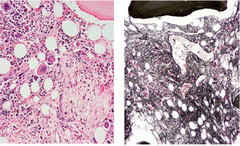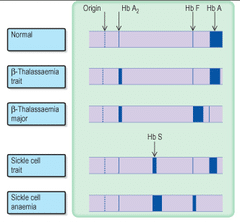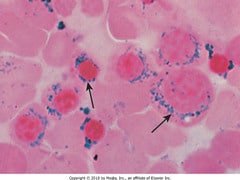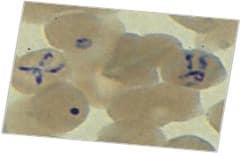CPR Test Answers
- Due to the essential nature of washing your hands, how much time is recommended to wash your hands?
10 seconds
20 seconds
1 minute
4 minutes - Before responding to a first aid scenario, what is the first question you should ask at the scene?
Age of the injured or ill person
Safety of the scene
Nature of the injury
Time of the injury - You come upon a person who has lost a significant amount of blood, has a very pale skin color, and is confused. What do you suspect the cause to be?
Seizure
Stroke
Low blood sugar
Shock - Personal protective equipment consists of the following items:
Gloves
Mask
Eye shield
All of the above - While dining out in a restaurant you hear a mother cry out that her six-month-old child, who was given some marbles by an older child, is gagging. His mouth area is turning blue and he’s unable to take a breath or cry out. What would you do first in this scenario?
Begin CPR
Attempt rescue breaths then compressions
Deliver back blows and chest thrusts
Blind finger Sweep - A stroke consists of which following signs?
ConfusionIncorrect response
Chest pain
Facial droop
Nausea - While performing CPR on an infant, another rescuer appears on the scene, what do you do next?
Immediately transport the patient
Wait until exhausted, then switch
Have the second rescuer help with CPR, to minimize fatigue
Have the second rescuer begin ventilations; ratio 30:2 - What would be the most likely scenario if a 20-year-old dove headfirst off a dock and once they reached the surface of the water didn’t appear to be moving?
Heart attack
Low blood sugar
Neck injury
Mammalian diving reflex - Where should you place the AED pads when treating an infant for pediatric cardiac arrest?
Chest and back
Do not use an AED on an infant
Upper chest and mid abdomen
Wherever they fit - You are first to the scene and you find an unresponsive person with no pulse that has thrown up. You feel CPR is not something you are comfortable giving them. What would be the next best thing for you to do?
Wipe off the face or cover with a shirt
Compression only CPR
Go and get help
Do not initiate resuscitation - How long should you check for breathing while performing CPR?
Do not check for breathing, continue chest compressions
2 seconds
5 seconds
No longer than 10 seconds - What would your next step be after you are performing single-person CPR and the AED (Automatic External Defibrillator) advises a shock?
Call for help
Resume CPR with chest compressions
Check for a pulse
Resume ventilation - After finding an unresponsive child, yelling for help, and confirming the child isn’t breathing what would be your next course of action?
Leave the child and search for an AED
Deliver rescue breaths as most cardiac arrest occur due to breathing problems
Begin back blows and chest thrusts
Deliver 30 chest compressions - As a daycare provider that is working alone, one of your three-year-old children isn’t feeling well and lays down for a nap. After checking on the child, you notice they are not breathing and are blue in color. What would be the best step to take?
Do back blows.
Do a blind finger sweep.
Call 911.
Deliver two minutes of CPR - When you try to give an unresponsive adult a rescue breath and the chest does not appear to rise, what would you do next?
Perform abdominal thrusts
Begin CPR
Go call 911
Repeat the head tilt/chin lift maneuver and attempt the breath again - What do you do if an infant is choking and while trying to assist them they become unresponsive?
Leave the infant to get help.
Do a blind finger sweep
Begin CPR.
Do abdominal thrusts. - After finding someone who is unresponsive, has a pulse but does not appear to be breathing, you find you are unable to give them CPR, what do you do next?
Begin CPR
Repeat the head tilt/chin lift maneuver and attempt the breath again
Abdominal thrusts
Heimlich maneuver - AED pads can be used for children at what age?
17
16
14
Up until puberty - Arriving first to the scene, you find an unresponsive person with no pulse that has thrown up. You feel CPR is not something you are comfortable giving them. What would be the next best thing for you to do?
Wipe off the face or cover with a shirt
Compression only CPR
Go and get help
Do not initiate resuscitation - Properly operating an AED include the following steps:
Power on the AED, attach electrode pads, shock the person, and analyze the rhythm
Power on the AED, attach electrode pads, analyze the rhythm, and shock the person
Go and gePower on the AED, analyze the rhythm, attach electrode pads, and shock the person
Power on the AED, shock the person, attach electrode pads, and analyze the rhythm
Read Also: CPR Pretest
What is the rate for chest compressions per minute for any age?
100 compressions per minute
The compression-ventilation ratio for one or two rescuers for ADULT CPR is?
30 compression to 2 ventilation breaths
The compression-ventilation ratio for one or two rescuer CHILD or INFANT CPR is?
15 compressions to 2 ventilation breaths
Where should the hands be placed on the chest for adult CPR?
hands should be placed on the lower half of breast bone
What is the preferred hand technique for two rescuer infant CPR?
2 thumb – Thumb & encircling hand technique (compressions with thumbs)
What is the depth of compressions on an adult?
2 inches
What is the depth of compression on an infant?
⅓ the depth of the chest size or 4 cm
The rescuers knows its rescue breaths are effective when what happens?
When the chest rises
What is the first step in using an AED?
Turn it on
After an AED shock is delivered, what is the next step?
Check for breathing. If there isn’t an breathing occurring, begin compressions and respirations.
Why is high quality CPR and compressions necessary?
High quality CPR is necessary because is provides adequate blood flow and oxygen circulation throughout the body when done correctly.
When is scene safety assessed?
When you first arrive at the scene
Interruptions to CPR should take more than ___ seconds.
10
Chest compressions should be initiated within ___ seconds if identifying victim is not responsive and has no pulse.
10
In two rescuer CPR, the first rescuer starts ___________ _________________ while the seconds rescuers ____________ _ _ _.
starts chest compressions; call 911. (or activated AED and/or provides help with airway)
If a choking victim becomes unresponsive, the rescuer should first call for help (or EMS) and begin _____.
CPR
Rescue breaths for a CHILD or INFANT should be one breath every ________________.
3-5 seconds
Rescue breaths for an ADULT should be one breath every ____________.
5-6 seconds
How do you relive choking in an INFANT?
5 back slaps, 5 chest thrusts
How do you relieve choking in an ADULT?
abdominal chest thrust (Heimlich maneuver)
If any choking victim goes unresponsive, what additional step do you perform before breathing?
CPR, look, and remove if there is anything visible in the back of the victims airway
Blod smear
Gray platelets missing their typical granules
Microlytic anemias
siderblastic anemia, ACD, Lead posioning, Thalassemias, Irondeficiency late
Normocytic – nonhemolytic
Reticulocyte count is normal or decrease
Iron def. early. ACD. aplastic anemia. chronic kidney disease
Iron def. early. ACD. aplastic anemia. chronic kidney disease
Hemolytic — intrinsic
High reticulocyte count
RBC membrane defect — hereditary spherocytosis, G6pD, HbC sickle cell
RBC membrane defect — hereditary spherocytosis, G6pD, HbC sickle cell
Hemolytic extrensinc
Autoimmune, infections
Macrocytic -Megaloblast
folate deficiency, B12m orotic aciduria
Macrocytic — Non megaloblastic
liver disease, alcoholism, diamond blacking
Physical features of iron deficiency anemia
angular cheilitis, Plummer vinsons

Plummer vinson syndrome
Iron transport
Transferrin
Iron storage
Ferritin — may be false high if patient has an active infection or inflammation
What is iron used to make
Hemoglobin, myglobin, enzymes
Hemoglobin electrophoresis- sickle cell

megaloblastic anemias
megaloblasts in marrow as well
as macrocytes in the peripheral bloold
as macrocytes in the peripheral bloold
Rule of 3’s
Drug-Induced hemolysis
Penicillin the drug can bind to the RBC membrane so now the body sees it as a foreign antigen so. Now you’re destroying your own RBC that have this medication bound to it
Hereditary Spherocytosis
Abnormal cytoskeletal proteins (spectrin, ankyrin, band 3 and protein 4.2) are unstable and have less flexibility.
An impaired membrane with this permeability defects allows Na+ to accumulate in the cell, while allowing the escape of K+
Destruction of cells — jaundice
Cells will pop at lower water concentrations
An impaired membrane with this permeability defects allows Na+ to accumulate in the cell, while allowing the escape of K+
Destruction of cells — jaundice
Cells will pop at lower water concentrations
G6PD deficiency: Hemolytic anemia due RBC Enzyme defect
maintains the level of the coenzyme nicotinamide adenine dinucleotide phosphate (NADPH).
NADPH restores the level of glutathione which protects the red blood cells against oxidative damage.
neonatal jaundice, favism, hemolysis by oxidant drugs
NADPH restores the level of glutathione which protects the red blood cells against oxidative damage.
neonatal jaundice, favism, hemolysis by oxidant drugs
HGB
Hemoglobin concentration — the concentration of hemoglobin the blood
RBC
The concentration of RBC in the whole blood
HCT
Hematocrit — volume percentage of whole blood occupied by RBC
3 x HGB
3 x HGB
MCV
Mean corpuscular volume
he average volume of a circulating erythrocyte.
80-100
higher in large cell
he average volume of a circulating erythrocyte.
80-100
higher in large cell
MCH
Mean corpuscular hemoglobin
The quantity of hemoglobin in the average circulating erythrocyte.
higher in larger cells
The quantity of hemoglobin in the average circulating erythrocyte.
higher in larger cells
MCHC
Mean corpuscular hemoglobin concentration
concentration of hemoglobin in the average RBC in circulation
same based on cell size
concentration of hemoglobin in the average RBC in circulation
same based on cell size
Observed reticulocyte count
Reticulocytes are typically reported as a percentage of the total erythrocytes.
RDW
CV — calculated by measuring the curve width at the point that is ∓1 standard deviation from the MCV, then dividing that number by the MCV. Minimize effects of small population of abnormal cells
SD is calculated by measuring the curve width at the point where 20% of cells have that volume — Reticulocytes have greater effect
SD is calculated by measuring the curve width at the point where 20% of cells have that volume — Reticulocytes have greater effect
Anemia due to premature red cell destruction
Corrected reticulocyte count
OR x patients HCT / mean normal HCT
Female hematocrit RR = 37% to 47%
Mean would be 37+47 / 2 —> 42
Female hematocrit RR = 37% to 47%
Mean would be 37+47 / 2 —> 42
Anemia due to insufficient red cell production
Anemia due to insufficient hemoglobin synthesis
Anemia due to impaired DNA synthesis
Insufficient supply of nucleotides will slow down the rate of DNA synthesis which means slower cell cycle progression
No problem in protein syntehsis so you’ll result in microcytes
decreased reticulocyte count, B12 and folate deficiency
No problem in protein syntehsis so you’ll result in microcytes
decreased reticulocyte count, B12 and folate deficiency
microcytic hypochromic
Anemia due to impaired HGB syntesis –> iron deficiency
macrocytic normochromic
Anemia due ti impaired DNA synthesis — Folate or B12 deficiency
Rule of three
RBC x 3 = HBG
HGB x 3 = HCT
HGB x 3 = HCT
Chronic iron defiecny
cause of limited protein synthesis , any stores of reticulocytes have been release but erthryopotein would be elevated
What vitamins are especially needed for adequate cell division?
Folic acid is converted to tetrahydrafolate which is essential for purine (G/A) and thymidine synthesis.
Vit. B12 Involved in the conversion of N5-methyltetrahydrafolate into THF.
Vit. B12 Involved in the conversion of N5-methyltetrahydrafolate into THF.
Right Shift
No production of immature neutrophils in the bone marrow
Indicates bone marrow suppression
Hyper-segmented
Lymphocytes
Indicates bone marrow suppression
Hyper-segmented
Lymphocytes
Lift shift
Occurs when increased bands and less mature neutrophils are present in the blood, along with a lower average number of lobes in segmented cells
Neutrophils
Decreased in hereditary netropenia, bone marrow disease, viruses
Increased in bacterial infections, tumors (left shift)
TH17
Increased in bacterial infections, tumors (left shift)
TH17
Lymphocytes
Decreased — Congenital immunodeficiency diseases, severe infections, corticosteroids, HIV
Increase– Viral infections, some fungi/ parasites, pertussis (right shift)
important in viral infections — CD8 T cells
Increase– Viral infections, some fungi/ parasites, pertussis (right shift)
important in viral infections — CD8 T cells
Eosinophils
Decreased in bacterial infections and ACTH
increased in parasitic infections, type 1 hypersensitive and asthma
increased in parasitic infections, type 1 hypersensitive and asthma
Monocytes
Decreased in corticosteroids, hairy cell leukemia
Increased in mycobacterial infections and TB
TH1 response –intracellular bacteria
Increased in mycobacterial infections and TB
TH1 response –intracellular bacteria
Basophils
Decreased with corticosteroids
Increased in hypersensitivity reactions (1)
Increased in hypersensitivity reactions (1)
Leukemia
When you have a ton of immature WBC in the periphery (left shift)
Hyperplasia
Higher than normal of cells, not abnormal shape
Hypoplasia
Incomplete or arrested development of an organ, below number o cells
Dysplasia
abnormal growth noted microscopically, might be premalignant
Aplasia
Congenital absence of an organ
Autoimmune
usually idiopathic
Autoimmune B cell autoantibodies
Neutropenia
Thrombocytopenia
Anemia
Thrombocytopenia
Anemia
Aplastic Anemia
T-cell mediated, decreased neutrophils, platelets and reticulocytes
looks like tons of fat in the bone marrow
looks like tons of fat in the bone marrow
Idiopathic autoimmune treatment
Combination of immunosuppressive agents and bone marrow growth factors
Neupogen, cyclosporine, prednisone
Neupogen, cyclosporine, prednisone
Autoimmune disease associations
RA: rheumatoid arthritis, Felty’s syndrome
SLE: systemic lupus erythematosis
Aplastic Anemia
SLE: systemic lupus erythematosis
Aplastic Anemia
Neupogen
Colony stimulating factor for white cell growth and proliferation
Cyclosporine and prednisone
immuno suppressant to inhibit current white blood cells from attacking stuff
Radiation induced marrow aplasia
Lymphoid and bone marrow cannot handle are amounts of radiation, and the body remembers radiation forever —

Myelofibrosis
reticulin stain to bring out the black fibers
Impact of Dose fractionation
Give in smaller doses over 6 weeks so that they can tolerate a larger amount
If your total body is exposed to over 800 you’re proabably going to die from other radiation problems – without planed in one big dose
If your total body is exposed to over 800 you’re proabably going to die from other radiation problems – without planed in one big dose
Myelophthisic Anemia
Due to marrow infiltration — solid tumors, liquid tumors, infection (TB, plotts)
Or due to myelofibrosis — new growth of fibrous tissue or new formation in marrow
Or due to myelofibrosis — new growth of fibrous tissue or new formation in marrow
Isolated anemia
Normal WBC and normal platelets
Luekopenia
Low WBC, neutropenia – lymphopenia
Thrombocytopenia
Low platelets
PK pathway
Enzyme in glycolysis that converts phosphoenolpyruvate to pyruvate with the generation of ATP
gene called PKLR
All ATP in RBC is via glycolysis
gene called PKLR
All ATP in RBC is via glycolysis
Phenotype and genotype for G6PDA-
most frequent in african populations
affects the stability of the G6PD enzyme. –> so it works fine just has a short half life so affects mostly older RBC
males have low penetrance –> asymptomatic
affects the stability of the G6PD enzyme. –> so it works fine just has a short half life so affects mostly older RBC
males have low penetrance –> asymptomatic
Phenotype and genotype G6PDB-
Mediterranean populations
affects both the stability of the enzyme and its catalytic activity.
Affects both young and old RBC
oxidant stress –> hemolysis much quicker
affects both the stability of the enzyme and its catalytic activity.
Affects both young and old RBC
oxidant stress –> hemolysis much quicker
Principle pathway product that is deficient in RBCs of a person with PK deficiency
reduces RBC ATP production.
effects membrane pumps than maintain membrane flexibility and cell shape — so they get killed by spleen
effects membrane pumps than maintain membrane flexibility and cell shape — so they get killed by spleen
Sickle cell gel technique
Normal will cut at the mstII site — 110 bp BRC product –> 56 and 54 bp bands
Affected will not be able to cut so they will have 110 bp gel
heterozygote will have 3 bands
cut with MSTII restriction enzyme
Affected will not be able to cut so they will have 110 bp gel
heterozygote will have 3 bands
cut with MSTII restriction enzyme
Sickle mode of inheritance
Autosomal recessive disease caused by a very specific mutation in the β-globin gene (HBB gene).
Mutation causes an amino acid substitution of valine for glutamic acid at amino acid 6 of the β-globin protein.
Mutation causes an amino acid substitution of valine for glutamic acid at amino acid 6 of the β-globin protein.
hemoglobin C disease
Its a lysine now instead of a glutamic acid so its not as severe as sickle cell
Mode of inheritance of hereditary sperocytosis / population
75% autosomal dominant, (20% are due to new mutations)
25% autosomal recessive — more severe
Most common hemolytic anemia of Northern Europeans
25% autosomal recessive — more severe
Most common hemolytic anemia of Northern Europeans
Mode of inheritance of hereditary elliptocytosis / population
Mostly autosomal dominant
african and mediterranean populations
african and mediterranean populations
Most prevalent enzyme disorder in the world
G-6-PD deficiency, x linked so mainly in males, in mediterranean countries, africa and china.
Female carriers are resistant to malaria
avoid oxidant drugs, fauvism, infections (oxidant stress)
Female carriers are resistant to malaria
avoid oxidant drugs, fauvism, infections (oxidant stress)
How HE mutations alter normal spectrin function.
α/β spectrin dimers cannot form into tetramers.
Mutations are sometimes seen in the genes coding for glycophorin and protein 4.1.
Elliptical cell
Mutations are sometimes seen in the genes coding for glycophorin and protein 4.1.
Elliptical cell
Metabolic pathway that G-6-PD is involved in
hexose monophosphate (HMP) shunt.
catalyzes the oxidation of glucose-6-P to 6-phosphogluconolactone (first step)
catalyzes the oxidation of glucose-6-P to 6-phosphogluconolactone (first step)
Product that is deficient in RBCs of a person with a G-6-PD deficiency.
NADPH –> reduced glutathione
without it –> hydrogen peroxide accumulates in the RBC.
This leads to oxidation of membrane components, fragility of the RBC and extensive hemolysis.
without it –> hydrogen peroxide accumulates in the RBC.
This leads to oxidation of membrane components, fragility of the RBC and extensive hemolysis.
Diagram and explain the relationship between NADPH, glutathione and hydrogen peroxide in RBCs.
without reduce glutathione hydrogen peroxide accumulates in the RBC.
This leads to oxidation of membrane components, fragility of the RBC and extensive hemolysis.
This leads to oxidation of membrane components, fragility of the RBC and extensive hemolysis.
Similarity between HS and HE
caused by defects in the linkage of the lipid bilayers of the cell membrane with the underlying cytoskeleton
normocytic anemias
Normocytic anemias are typically the result of enhanced RBC destruction or blood loss rather than a production problem.
Hereditary spherocytosis mutations
Ankyrin (ANK1)
Spectrin (SPT)
Band 3
protein 4.2
mutations lead to RBCs that lose cell membrane over time –> spherical cells that are more rigid
Spectrin (SPT)
Band 3
protein 4.2
mutations lead to RBCs that lose cell membrane over time –> spherical cells that are more rigid
Hereditary Spherocytosis microvessicles
Don’t have band 3 — span 3/ protein 4.2 def
Have band 3 — Spectrin/ ankyrin def.
Have band 3 — Spectrin/ ankyrin def.
HS autosomal recessive
Alpha Spectrin SPTA1
Spectrin
The spectrin/actin network represents the cortical cytosketon of RBCs.
Spectrin binds to ankyrin which anchors specitrin to the membrane via band 3 – 4.2 regulates association of band 3 and ankyrin
Spectrin binds to ankyrin which anchors specitrin to the membrane via band 3 – 4.2 regulates association of band 3 and ankyrin
HS autosomal dominant
Beta spectrin SPTB
Hemolytic Anemia cues
RBC had IgG and complement C3 on their surface –normally our RBC should not have these attached
PK Deficiency Genetics
PK is autosomal recessive.
PK deficiency produces a phenotype only in RBCs.
Typically, 5-25% of normal enzyme activity
Increased levels of 2-3 BPG allows for delivery to periphery
PK deficiency produces a phenotype only in RBCs.
Typically, 5-25% of normal enzyme activity
Increased levels of 2-3 BPG allows for delivery to periphery
Location or RBC destruction
Extravascular –> spleen, splenic macrophages in white pulp play large ole
Intravascular –> in the blood, complement mediated direct killing
Intravascular –> in the blood, complement mediated direct killing
Pathogenesis of AIHA
Autoantibodies directed against RBC membrane antigens that lead to RBC destruction
Shortens RBC life span
develop sporadically, not familial
Shortens RBC life span
develop sporadically, not familial
types of AIHA based on direct coombs test
DAT pattern
Optimal temperature that the autoantibodies react with the human RBCs Three types, warm, cold and mixed
Optimal temperature that the autoantibodies react with the human RBCs Three types, warm, cold and mixed
Warm AIHA
70-80% of cases in adults, 90% in children
DAT pattern –> IgG postive or IgG and C3 postive
antibodies major players
Autoantibodies bind and react with RBC at 37
extracellular hemolysis
Does not lead to hemoglobinemia and hemoglobinuria
DAT pattern –> IgG postive or IgG and C3 postive
antibodies major players
Autoantibodies bind and react with RBC at 37
extracellular hemolysis
Does not lead to hemoglobinemia and hemoglobinuria
Warm AIHA symptoms
similiar to anemia, fatigue, jaundice, dyspnea
Elevated serum levels of indirect bilirubin,
Elevated serum levels of indirect bilirubin,
Cold AIHA symtoms
Almost always in adults over 50
similiar to anemia,
CAD
cold exposure –> acrocyanosis via massive agglutination of RBCs (blue/ yellow hands on heat image)
similiar to anemia,
CAD
cold exposure –> acrocyanosis via massive agglutination of RBCs (blue/ yellow hands on heat image)
Causes of Warm AIHA
primary –> idiopathic
secondary –> lymphoproliferative disorder like leukemia, lymphoma and other autoimmune disorders like lupus
secondary –> lymphoproliferative disorder like leukemia, lymphoma and other autoimmune disorders like lupus
Causes of Cold AIHA
primary — idiopathic
secondary — underlying illnesses, infections , lymphoproliferative disorders
RARELY autoimmune
common after mycoplasma pneumoniae — can see their antibodies
secondary — underlying illnesses, infections , lymphoproliferative disorders
RARELY autoimmune
common after mycoplasma pneumoniae — can see their antibodies
Treatment options for Warm AIHA
Corticosteroids, splenectomy, blood transfusions
Incomplete phagocytosis results in wAIHA
Spherocytes
Sphere shaped RBCs rather than bi-concave disk shaped
Sphere shaped RBCs rather than bi-concave disk shaped
Treatment options for cold AIHA
Treat Mycoplasma infection with antibiotics (underlying infection commonly)
Corticosteroids
blood transfussions
Corticosteroids
blood transfussions
Pathogenesis of cAIHA
DAT pattern for IgG is negative and C3 positive
complement is the major player
Cold antibodies typically react with RBCs at below 30oC (optimum, 4oC)
Usually IgM
Activates classical complement pathway
complement is the major player
Cold antibodies typically react with RBCs at below 30oC (optimum, 4oC)
Usually IgM
Activates classical complement pathway
Pathogenesis of wAIHA
~50% of DAT is positive for complement component
Mostly C3d
complement bound antibodies can also be cleared in the liver via Kupfer cells
Mostly C3d
complement bound antibodies can also be cleared in the liver via Kupfer cells
Pathway of cAIHA
Autoantibodies bind RBC in periphery when cold and eventually the antibodies come off and the complement stays
hemolysis is both extra and intravascular ( can lead to hemoglo binemia and hemoglobinuria)
hemolysis is both extra and intravascular ( can lead to hemoglo binemia and hemoglobinuria)
Why do infections cause autoimmunity
Molecular mimicry — foreign antigens share sequences or structures similar with self antigens
Beta globin
146 amino acids
chromsome 11
Hgb A1
chromsome 11
Hgb A1
Alpha globin
141 amino acids
chromosomes 16
Hgb A1, A2 and fetal
chromosomes 16
Hgb A1, A2 and fetal
Thalassemia genetics
Alpha — gene deletion
beta — gene mutation
microcytic, hypochromic
beta — gene mutation
microcytic, hypochromic
Alpha thalassemia – one deletion
Silent carrier
No way to really diagnose
No way to really diagnose
Alpha thalassemia – two deletions
Thal trait; mild hypochromic microcytic anemia
MCV 7-=0-75
might be confused with iron deficiency
May be homozygous (-a/-a) or hetero (–/aa)
MCV 7-=0-75
might be confused with iron deficiency
May be homozygous (-a/-a) or hetero (–/aa)
Hemoglobin H Disease
Live normal life; however, infections, pregnancy, exposure to oxidative drugs may trigger hemolytic crisis.
RBCs are microcytic, hypochromic with marked poikilocytosis
vulnerable to oxidation –> heinz like bodies, golf ball like and stained with brilliant cresyl blue (have dots in the middle of RBC and with blue look like they have granules)
RBCs are microcytic, hypochromic with marked poikilocytosis
vulnerable to oxidation –> heinz like bodies, golf ball like and stained with brilliant cresyl blue (have dots in the middle of RBC and with blue look like they have granules)
Alpha thalassemia – three deletions
Hgb H; variable severity, but less severe than Beta Thal Major
Hemoglobin II disease
(–/-a)
Results in accumulation of excess unpaired gamma or beta chains. Born with 10-40% Bart’s hemoglobin (γ4). Gradually replaced with Hemoglobin H (β4).
Hemoglobin II disease
(–/-a)
Results in accumulation of excess unpaired gamma or beta chains. Born with 10-40% Bart’s hemoglobin (γ4). Gradually replaced with Hemoglobin H (β4).
Alpha thalassemia – four deletions
Bart’s Hgb; Hydrops Fetalis; In Utero or early neonatal death —> incomparable with life
Hemoglobin Bart has high oxygen affinity so cannot carry oxygen to tissues.
Baby with HUGE stomach
Hemoglobin Bart has high oxygen affinity so cannot carry oxygen to tissues.
Baby with HUGE stomach
Alpha Thalassemias — treatment
Nothing really, just don’t confuse them with needing iron treatment
Ferratin in thalassemia vs. iron deficiency
Low in iron deficiency
Silent Carrier State for
β-Thalassemia
β-Thalassemia
Due to various heterogenous beta mutations
nearly normal beta/alpha chain ratio and no hematologic abnormalities.
nearly normal beta/alpha chain ratio and no hematologic abnormalities.
β-Thal Minor
Have one normal beta gene and one mutated beta gene.
Fine unless under stress like pregnancy, infection or folic acid deficiency
Fine unless under stress like pregnancy, infection or folic acid deficiency
β-Thal Intermedia
May be either heterozygous from mutations causing mild decrease in beta chain production, or may be homozygous causing a more serious reduction in beta chain production. maintain hemoglobin 7 or else transfusions
Beta Thalassemia Major
Reduced or nonexistent production of β-globin
poor oxygen carrying
increased alpha global production and precipitation
Anemia, jaundice, splenomegaly
Hyperplastic Bone Marrow–Increase in extramedullary erythropoiesis
severe microcytic, hypochromic anemia.
poor oxygen carrying
increased alpha global production and precipitation
Anemia, jaundice, splenomegaly
Hyperplastic Bone Marrow–Increase in extramedullary erythropoiesis
severe microcytic, hypochromic anemia.
Beta Thalassemia Major- appearance
X-ray looks like theres hair present
Have protruding upper teeth and Mongoloid facial features.
target cells, teardrop cells and elliptocytes.
Have protruding upper teeth and Mongoloid facial features.
target cells, teardrop cells and elliptocytes.
Mentzer index for children (MCV/red blood cell count) for Thalassemia vs. iron
High in iron def.
low in thalassemia
low in thalassemia

Thalassemia electrophoresis
Quantitative defects of globin chain synthesis result in hemoglobinopathies
Thalassemia
Sideroblastic anemias
Defects involving incorporation of iron into the heme molecule
hypochromic cells in the peripheral blood and increased marrow iron;
may sideroblasts in bone marrow
hypochromic cells in the peripheral blood and increased marrow iron;
may sideroblasts in bone marrow
Qualitative defects of globin chain synthesis result in hemoglobinopathies
Sickle cell

Ringed sideroblasts
Prushin blue stain in all erythro-precursors the iron is actually precipitating in the mitochondria — any iron in bone marrow means your not iron def.
Sideroblastic Anemia Etiology
Hereditary
X-linked (isolated / genetic syndromes)
Autosomal
or can be acquired through drugs and heavy metals
X-linked (isolated / genetic syndromes)
Autosomal
or can be acquired through drugs and heavy metals
Causes of iron deficiency in infants and young children
Insufficient dietary iron
Causes of iron deficiency in infants and young women
Menstruation or pregnancy
Causes of iron deficiency in older adults
Excessive bleeding
The earliest lab result that might suggest an iron deficiency prior to anemia.
Anisocytosis
Contrast the functions of transferrin and ferritin.
Transferrin — extracellular iron transport
Ferritin — intracellular iron storage, highly expressed in macrophages of liver and spleen, hollow sphere to store iron
Ferritin — intracellular iron storage, highly expressed in macrophages of liver and spleen, hollow sphere to store iron
How does reduced hemoglobin production result in a microcytic anemia.
Limiting factor in size
Lab results for stage 1 iron deficiency
Tissue iron stores are reduced and serum ferritin levels decrease
Transferrin receptor levels on the cell surface increase
NOT anemic
Transferrin receptor levels on the cell surface increase
NOT anemic
Lab results for stage 2 iron deficiency
Serum iron levels decrease.
Transferrin levels increase
Fewer cells being produced (anemia) but most cells being made are normocytic and normochromic.
Beginning to see anisocytosis and increased RDW.
protoporphyrin levels increase because its the last intermediate in heme biosynthesis before you need iron
Transferrin levels increase
Fewer cells being produced (anemia) but most cells being made are normocytic and normochromic.
Beginning to see anisocytosis and increased RDW.
protoporphyrin levels increase because its the last intermediate in heme biosynthesis before you need iron
Diagram the distribution of iron in a healthy individual.
Lab results for stage 3 iron deficiency
Hemoglobin levels drop below 10 g/dL
Microcytic and hypochromic erythrocytes are seen.
MCV and RDW are better indicators than is MCHC for iron deficiency anemia.
Microcytic and hypochromic erythrocytes are seen.
MCV and RDW are better indicators than is MCHC for iron deficiency anemia.
Anisocytosis
Earliest lab findings, unequal size of RBC
Ferrous
Toxic unbound
so its always protein associated
so its always protein associated
Ferric
Fe3+ ) travels in the circulation bound to plasma transferrin.
excessive iron stored in this state
excessive iron stored in this state
Target cell
RBC with a dark center and periphery with a clear ring between
% saturation
Serum iron/TIBC x 100
20-50% normal
20-50% normal
TIBC
Total iron binding capacity and is a measure of transferrin levels.
5’/3′ UTR
proteins for iron homeostasis are regulated postranscriptionally.
iron-response elements (IREs) 5′–> regulates translation
IRES 3′ UTR –> regulates mRNA stability
iron-response elements (IREs) 5′–> regulates translation
IRES 3′ UTR –> regulates mRNA stability
Erythrocyte Size
Quantity of hemoglobin dictates RBC size
IREs/ IRP
IREs form a stem-loop structure in the mRNA.
IREs are bound by iron regulatory proteins (IRPs) that respond to iron levels
IRP binding to 5′ — inhibits translation
IRP binding to 3′ enhances stability and translation
IREs are bound by iron regulatory proteins (IRPs) that respond to iron levels
IRP binding to 5′ — inhibits translation
IRP binding to 3′ enhances stability and translation
poikilocytosis
Abnormally shaped RBC
cause elevation in RDW, even through MCV goes down because cell size is shrinking, but a wider range of shapes now
cause elevation in RDW, even through MCV goes down because cell size is shrinking, but a wider range of shapes now
Apoferritin
IRE in 5′
will be expressed in high levels in high iron.
will be expressed in high levels in high iron.
Hepcidin
protein represses iron transport in the gut as well as iron release from macrophages and other cells.
released from liver
When iron levels in the body are high, hepcidin levels increase (negative control)
inhibits ferroportin and prevents iron transport out of enterocytes and macrophages.
released from liver
When iron levels in the body are high, hepcidin levels increase (negative control)
inhibits ferroportin and prevents iron transport out of enterocytes and macrophages.
Transferrin receptor
IRE in 3′
will be expressed highly in low iron levels
will be expressed highly in low iron levels
Fe Salts
oral vs. IV
Low iron IRP
binding to apoferritin mRNA and inhibiting translation.
Apoferritin expression low.
5′ and tf receptor inhibitor degradation
Apoferritin expression low.
5′ and tf receptor inhibitor degradation
High iron IRP
NO IRP binding to apoferritin mRNA and no inhibition of translation.
Apoferritin expression high.
and none to Tf receptor — Tf expresion low
Apoferritin expression high.
and none to Tf receptor — Tf expresion low
Folate
def. –> inadequate dietary intake, high demands and low stores so it manifests much quicker
1mg PO daily
good prophylactically in pregnancy and alcoholics, hemolytic anemias
1mg PO daily
good prophylactically in pregnancy and alcoholics, hemolytic anemias
B12(hydroxocobalamin)
anemia — Neurologic Syndrome (parathesias), low demand in body so can take a way
100-1000ug IM 1-2 weeks
100-1000ug IM 1-2 weeks
GM-CSF (sargramostim)
recombinant human GM-CSF.
Stimulates myelopoeisis
used in bone marrow transplantation
cancer adjuvant
Stimulates myelopoeisis
used in bone marrow transplantation
cancer adjuvant
Hydroxyurea
blocks ribonucleotide reductase which converts RNA bases into DNA bases. In Sickle cell anemia, it somehow causes an increased production of HbF (2 alpha and 2 gamma chains)
bone marrow suppression and GI effects, teratogen during pregnancy
bone marrow suppression and GI effects, teratogen during pregnancy
Thrombopoietin (romiplostim)
Stimulates megakaryopoiesis
Leads to long linear increases in platelet counts
used in idiopathic thrombocytopenia purpura, cancer chemotherapy adjuvant
Leads to long linear increases in platelet counts
used in idiopathic thrombocytopenia purpura, cancer chemotherapy adjuvant
IL-11 (oprelvekin)
Enhances megakaryocyte maturation.
Used in non myeloid cancers
Causes edema and many need diuretics concomitantly.
Used in non myeloid cancers
Causes edema and many need diuretics concomitantly.
How are growth factors given
IM or IV or else digestive system would break them up
Peptide proteins
glycosylated do not pass through membrane so the receptors for these growth factors are on the surface so they signal through the JAK / STAT pathway
Peptide proteins
glycosylated do not pass through membrane so the receptors for these growth factors are on the surface so they signal through the JAK / STAT pathway
G-CSF (filgrastim)
Filgrastim- recombinant human G-CSF
Stimulates neutrophil production
Uses –> After autologous bone marrow transplants
Cancer chemotherapy adjuvant
Stimulates neutrophil production
Uses –> After autologous bone marrow transplants
Cancer chemotherapy adjuvant
Erythropoietin
Used to treat anemia that is secondary to chronic kidney disease.
Hypertension, thrombotic events
Hypertension, thrombotic events
Pernicious anemia
Megaloblastic anemia due to vitamin B12 deficiency
When the body elicits an immune response against its own tissues against intrinsic factor needed for vitamin B12 absorption
When the body elicits an immune response against its own tissues against intrinsic factor needed for vitamin B12 absorption
Antibodies against parietal cells would
lead to ADCC, opsonization
What antibody effector function is used against IF?
Neutralization
Type 2 hypersensitivity, IgG or IgM because antibodies are not forming immune complexes
Type 2 hypersensitivity, IgG or IgM because antibodies are not forming immune complexes
Causes of chronic gastritis
Autoimmune gastritis
Helicobacter pylori infection
type 1 diabetes or other autoimmune
Helicobacter pylori infection
type 1 diabetes or other autoimmune
How to diagnose pernicious anemia
1 it will be megaloblastic — increased MCV, oval RBC and hyperhsegmented neutrophils,
Intestinal metaplasia can be seen in pernicious anemia
Ectoparasites
Live on the surface of their host, usually arthropods
Treatment of pernicious anemia
IM injection of B12
Definitive host
A host in which the parasite reaches sexual maturity
Endoparasites
Live within the body of the host, mostly protozoa and helminths
Cestode
Tapeworm
Segmented bodies
Hermaphroditic
Absorb nutrients no GI system
Segmented bodies
Hermaphroditic
Absorb nutrients no GI system
Trematode
Fluke (complex flatworm
Non-segmented (leaf)
Hermaphroditic
Primitive gut
Non-segmented (leaf)
Hermaphroditic
Primitive gut
Pituitary and Adrenal gland
Growth hormone and adrenal hormones stimulate erythropoeitin production
Normocytic normochromic
anemia in patients affected with
Growth hormone deficiency or addisons disease
Normocytic normochromic
anemia in patients affected with
Growth hormone deficiency or addisons disease
Reservoir host
Animal (definitive host) that serves to maintain the parasite’s life cycle in the environment
Three factors key to transmission of parasites
the source of infection; the mode of transmission; the presence of a susceptible host
Nematodes – roundworms
Non-segmented cylindrical bodies covered with cuticle
Separate sexes
complete GI
Separate sexes
complete GI
Hepcidin and inflammation
Increased because inflammation leads to IL6 which leads to its increased release
Increased erythropoietic activity (production of Red Cells)
suppresses Hepcidin production.
it inhibits iron transport across cell membranes, absorption and release of storage iron
Increased erythropoietic activity (production of Red Cells)
suppresses Hepcidin production.
it inhibits iron transport across cell membranes, absorption and release of storage iron
Hypothyroidism anemia
chronic disease or
a Macrocytic anemia occurs
a Macrocytic anemia occurs
Anemia of Chronic Disease:
Also called “anemia of inflammation”
May follow both mild acute infection eg Otitis media or gastroenteritis or with more severe and chronic infections.
There is a fall in hemoglobin after an inflammatory reaction
May follow both mild acute infection eg Otitis media or gastroenteritis or with more severe and chronic infections.
There is a fall in hemoglobin after an inflammatory reaction
Erythrocyte sedimentation rate
ESR= number of mm that Red blood cells fall in 1 hour in a vertical tube of anticoagulated blood
0-15 for males and 0-20 for females
Low – sickle cell
High — autoimmune, cancer, inflammation
0-15 for males and 0-20 for females
Low – sickle cell
High — autoimmune, cancer, inflammation
Bacteremia
-Viable bacteria in the bloodstream
-clinical symptoms –> sepsis and speticemia
H. influenzae, Brucella, listeria, streptococcus pneumoniae
-clinical symptoms –> sepsis and speticemia
H. influenzae, Brucella, listeria, streptococcus pneumoniae
C Reactive protein
A non specific protein that rises quickly in inflammation and infections.
Clinical Manifestations of Sickle Cell Disease
Unpredictable severe pain episodes –>Pain due to tissue damage from lack of blood flow
Triggers –> cold, infection and low O2 levels
Reversing the triggers can help to reverse sickled cell to normal shape and restore flow
splenic palpation!
Triggers –> cold, infection and low O2 levels
Reversing the triggers can help to reverse sickled cell to normal shape and restore flow
splenic palpation!
Viremia
-Virus in the blood
-Can either stay at entry or leave (first replicate at site of entry)
-Can either stay at entry or leave (first replicate at site of entry)
Infection-mediated Hemolytic Anemia
Infections that lead to the presentation of hemolytic anemia
Most common in malaria.
Clostridium perfringens
Mycoplasma pneumoniae
Most common in malaria.
Clostridium perfringens
Mycoplasma pneumoniae
life cycle of Babesia microti
Transmitted via young nymph of deer tick, rodents serve as rosorvoir where it undergoes asexual reproduction. The definitive host is the tick
so tic bites mouse, parasite grows, tic bites again –> human dead end host
so tic bites mouse, parasite grows, tic bites again –> human dead end host
Clostridium perfringens
Occurs most often in patients who have undergone septic abortion or after acute cholecystitis
Neutrophils with two bacilli
Neutrophils with two bacilli
How to diagnose and prevent Babesiosis.
Fever, chills, hemolytic anemia, elderly and immosurpressed at higher risk, many others are asymptomatic
Ring Forms –trophozoites
Maltese cross
avoid ticks
Ring Forms –trophozoites
Maltese cross
avoid ticks
Carrion’s Disease 2 phases
Human bartonellosis, also called the Oroya fever
Transmitted by sand fly
An acute hematic phase characterized by a systemic febrile illness and a chronic phase with skin lesions known as Verruga Peruana wart
Transmitted by sand fly
An acute hematic phase characterized by a systemic febrile illness and a chronic phase with skin lesions known as Verruga Peruana wart
Carrion’s Disease treatment
Ciprofloxacin
Wart –azithromycin, rifampin
Wart –azithromycin, rifampin
Clostridium perfringens mechanism of infection
Alpha toxin, a lecithinase C that lyses erythrocytes (intravascular hemolysis), platelets, leukocytes and endothelial cells
Life cycle of malarial parasite
P. falciparum and P. vivax
Female mosquito is the specific vector — Human host –> mosquito
blood stage parasites –> clinical manifestations
Female mosquito is the specific vector — Human host –> mosquito
blood stage parasites –> clinical manifestations
Vectors for malarial parasite
Human and mosquito(sporozoites)

Maltese cross
Malaria prevention
Personal protection – use of insect repellents, bed-nets, and protective clothing
Chloroquine
Primarily a blood schizonticide, concentrates in vacuoles preventing proper heme breakdown. Buildup of free heme is toxic to the parasite.
Oral
Pruritus in africans
malaria
Oral
Pruritus in africans
malaria
Differentiate malaria from babesiosis based on laboratory and clinical findings.

Verruga Peruana wart
B. bacilliformis
Carrion’s Disease
Carrion’s Disease
Atovaquone
Disrupts mitochondrial electron transport. Active against both tissue and blood schizonts, so can discontinue at one week post exposure.
Malaria and Babesis
Malaria and Babesis
Azithromycin
Macrolide antibiotic that targets the 50S ribosomal subunit and inhibits Protein Synthesis
Babesiosis
oral, mostly unchanged by liver
GI problems, increased QT interval
Babesiosis
oral, mostly unchanged by liver
GI problems, increased QT interval
Clindamycin
similar to macrolides- binds 50S ribosomal subunit and blocks protein synthesis.
Oral
prodrug
C.Diff
Babesiosis, MRSA
Oral
prodrug
C.Diff
Babesiosis, MRSA
Quinine
Depresses oxygen uptake and carbohydrate metabolism; intercalates into DNA, disrupting the parasite’s replication and transcription.
Oral
Prolonged QT
Babesiosis, malaria
Oral
Prolonged QT
Babesiosis, malaria
LUMEFANTRINE
but possibly inhibits the formation of b-hematin ( a storage structure that the parasite uses to get rid of the high levels of heme inside the parasite)[hemozoin].
oral
CYP3a4 metabolism
GI affects, QT interval
oral
CYP3a4 metabolism
GI affects, QT interval
malarial paroxysm
(fever spikes, chills, and rigors at regular intervals) associated with the synchronous release of schizonts and the lysis of erythrocytes
MEFLOQUINE
nknown, but prophylaxis of malaria is due to the destruction of the asexual blood forms of the malarial pathogens.
oral
20 day half life
Behavioral disturbances and CNS dizziness
NOT FOR EPILEPTIC patients
oral
20 day half life
Behavioral disturbances and CNS dizziness
NOT FOR EPILEPTIC patients
PRIMAQUINE
DOC for eradication of dormant liver forms of vivax and ovale. Active against hepatic, dormant, and gamete stages, not effective against erythrocytic stage
Oral
hemolytic anemia so don’t give to G6PD patients
Oral
hemolytic anemia so don’t give to G6PD patients
TETRACYCLINES
Competitively blocking the binding of tRNA to the A site of the 30S subunit, preventing addition of new amino acids to the growing peptide chain.
Oral or IV
short half life
Not for pregnant woman — discoloration of teeth in fetus
phototoxicity
Oral or IV
short half life
Not for pregnant woman — discoloration of teeth in fetus
phototoxicity



